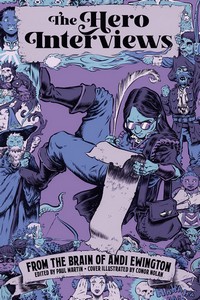This is a week and a half late or so, mostly because I kept trying to go on and on and on about aspects of the book that I should leave for Pandian to tell you. My apologies for the delay to the nice people at Minotaur who offered me the book and have been nudging me to say something about it.
 The Library Game
The Library Game
by Gigi Pandian
DETAILS: Series: Secret Staircase Mysteries, #4 Publisher: Minotaur Books Publication Date: March 18, 2025 Format: eARC Length: 320 Read Date: March 5-8, 2025

What’s The Library Game About?
The project that Secret Staircase Construction is about to wrap up has a couple of distinctive elements (on top of the sliding bookshelves, escape room, etc.)—their client is dead, and his death is not a mystery at all. Most people might not consider that very distinctive, but those people haven’t read a mystery novel featuring Tempest Raj.
This client was an aficionado of classic mysteries—okay, aficionado is an understatement—he was borderline obsessed and had the money to indulge that obsession. As his death neared, he decided to turn most of his house into a library (leaving room for an apartment for his librarian nephew), stocked with his own collection. This sounds like a dream come true for most of my readers, right?
He hired Secret Staircase to give it just the right look and touch, even turning part of it into an Escape Room. Sadly, he died before it was completed, leaving his nephew to bring his vision to life.
While the library is being finished—and waiting for official approval to make it a public entity—there’s a neighborhood festival. To get some promotion for the library (and to be good neighbors), they’ve hired some local actors to stage a little performance.
During a dress rehearsal for that performance, something goes wrong—one of the actors disappears (I’m glossing over a lot here), so they try again the next day—in the midst of that… I don’t even know how to gloss over this. It’s like they all chanted “Macbeth!” while walking under a ladder and crossing a black cat’s path or something—so many things go wrong, and a body is discovered. Tempest’s magician friend, Sanjay, appears to be the prime suspect—although the rest of the actors and workers aren’t above suspicion either.
Well, more than one person floats the idea of the deceased client’s ghost being behind it all. So, there are plenty of suspects, however unlikely.
Tempest (and her friend group and family) has her work cut out for her if she’s going to clear Sanjay’s name, find the killer, and get the Library set for the festival.
The Sense of Fun
Yes, this is a murder mystery. Livelihoods, wrongful convictions, and more are on the line. But there is a strong sense of fun to this book. Our amateur sleuths are a group of friends who’ve been down this road before (three times to be exact)—in one way or another.
They like the challenge, they enjoy mysteries, illusions, and everything else going on here—and they can’t help but enjoy this in some way—and this comes out in their interactions with each other.
There’s a sense of play here as they work through this, some running jokes, and so on. I’m not saying that books two and three were absent fun, but it was played down a bit because of everything else. This is as fun as the first book—and maybe more so, because the relationships are better settled and Tempest isn’t under that cloud anymore.
Beyond the greater sense of fun than we’ve had for a bit, there’s the cozy and warm feeling you get from reading a solid found family/friend group (in the midst of a flesh and blood family), these people like each other. It’s hard to beat that feeling.
All of that serves as a bonus to a clever mystery.
So, what did I think about The Library Game?
I was fairly convinced that the previous book in the series, The Raven Thief was going to be the last one as it wrapped up a three-book arc, serving as a nice trilogy. I was so happy to be wrong—I wanted more time with Tempest and her friends—especially Ivy (I’d take a spin-off book full of her essays on locked-room mysteries) and Abra. Not to mention the fun of imagining Ash’s culinary offerings.
Beyond the characters, Pandian knows how to deliver a contemporary locked-room crime and how to keep the tension building while keeping the whole book entertaining. I need to make time for her backlist soon to see how these books compare with her earlier offerings.
I’d like Ernest Cunningham (or Ivy, I guess) to weigh in on Pandian’s books because I’m not entirely certain that she plays fair with her clues and solutions. Particularly in this case. But that’s just to satisfy a mental itch, because I really don’t care—I thought the solution to this and the reveal were pulled off satisfyingly well.
This would make a good jumping-on point for someone new to this world and is a must-read for people who enjoyed any of the previous three. It’s a clever book, a smart mystery, filled with good friends and warm feelings. Who doesn’t want that?
Disclaimer: I received this eARC from St. Martin’s Press via NetGalley in exchange for this post which contains my honest opinion—thanks to both for this.

This post contains an affiliate link. If you purchase from it, I will get a small commission at no additional cost to you. As always, the opinions expressed are my own.
![]()










